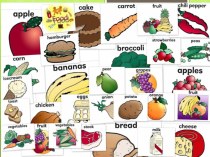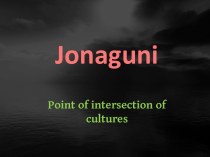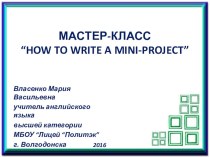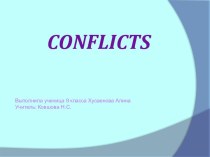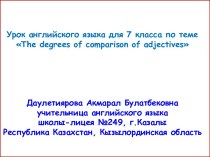- Главная
- Разное
- Бизнес и предпринимательство
- Образование
- Развлечения
- Государство
- Спорт
- Графика
- Культурология
- Еда и кулинария
- Лингвистика
- Религиоведение
- Черчение
- Физкультура
- ИЗО
- Психология
- Социология
- Английский язык
- Астрономия
- Алгебра
- Биология
- География
- Геометрия
- Детские презентации
- Информатика
- История
- Литература
- Маркетинг
- Математика
- Медицина
- Менеджмент
- Музыка
- МХК
- Немецкий язык
- ОБЖ
- Обществознание
- Окружающий мир
- Педагогика
- Русский язык
- Технология
- Физика
- Философия
- Химия
- Шаблоны, картинки для презентаций
- Экология
- Экономика
- Юриспруденция
Что такое findslide.org?
FindSlide.org - это сайт презентаций, докладов, шаблонов в формате PowerPoint.
Обратная связь
Email: Нажмите что бы посмотреть
Презентация на тему interesting traveling
Содержание
- 2. The presentation was prepared by Halyna Bilyk
- 3. Travelling is often about trying the unusual
- 4. 1. Bird's Nest Soup, China You wouldn't
- 5. 2. Fried tarantulas, Cambodia If you suffer
- 6. 3. Puffer fish, Japan You've got to
- 7. 4. Balut, Phillipines A bit like with
- 8. 5. Casu Marzu, Sardinia This Sardinian cheese
- 9. Скачать презентацию
- 10. Похожие презентации
The presentation was prepared by Halyna Bilyk


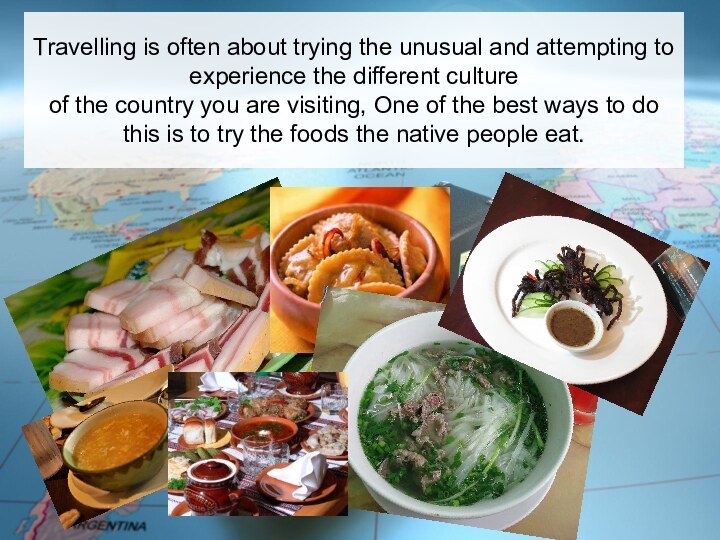
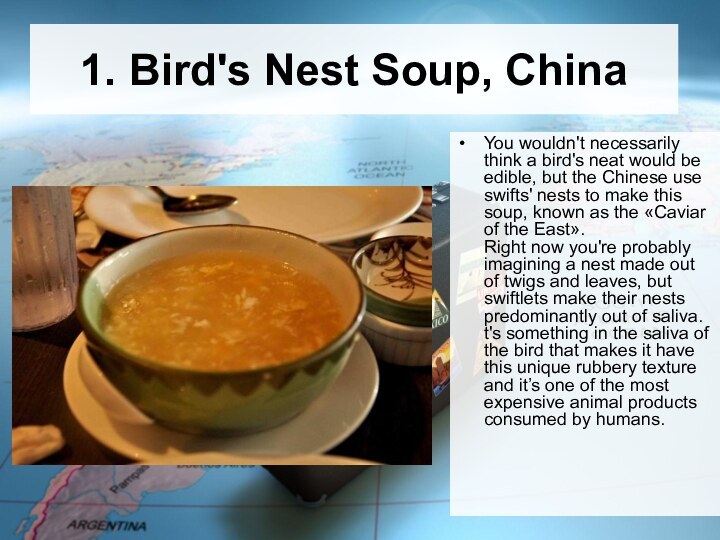
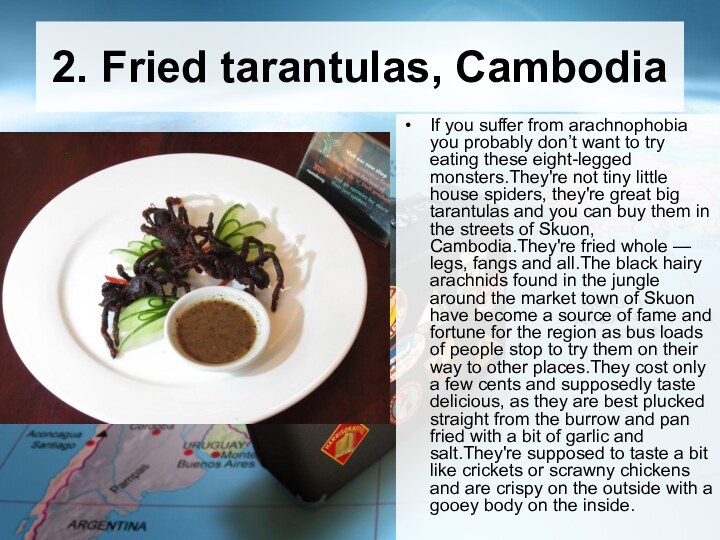
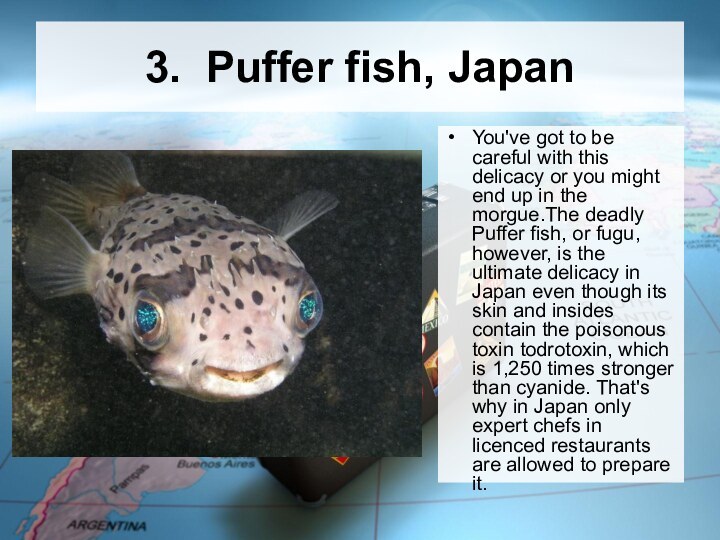
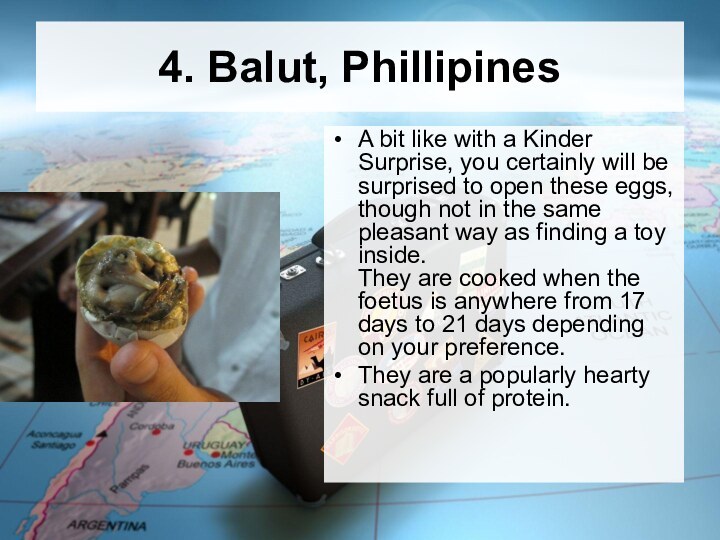
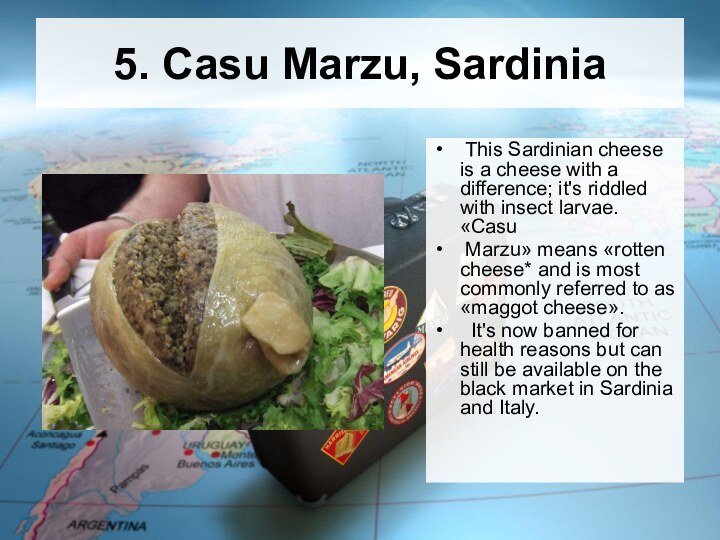
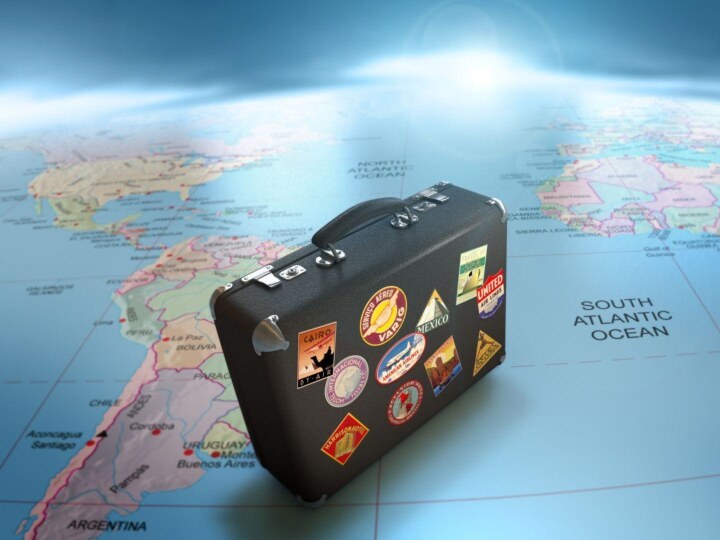
Слайд 4
1. Bird's Nest Soup, China
You wouldn't necessarily
think a bird's neat would be edible, but the
Chinese use swifts' nests to make this soup, known as the «Caviar of the East». Right now you're probably imagining a nest made out of twigs and leaves, but swiftlets make their nests predominantly out of saliva. t's something in the saliva of the bird that makes it have this unique rubbery texture and it’s one of the most expensive animal products consumed by humans.
Слайд 5
2. Fried tarantulas, Cambodia
If you suffer from
arachnophobia you probably don’t want to try eating these eight-legged
monsters.They're not tiny little house spiders, they're great big tarantulas and you can buy them in the streets of Skuon, Cambodia.They're fried whole — legs, fangs and all.The black hairy arachnids found in the jungle around the market town of Skuon have become a source of fame and fortune for the region as bus loads of people stop to try them on their way to other places.They cost only a few cents and supposedly taste delicious, as they are best plucked straight from the burrow and pan fried with a bit of garlic and salt.They're supposed to taste a bit like crickets or scrawny chickens and are crispy on the outside with a gooey body on the inside.
Слайд 6
3. Puffer fish, Japan
You've got to be
careful with this delicacy or you might end up
in the morgue.The deadly Puffer fish, or fugu, however, is the ultimate delicacy in Japan even though its skin and insides contain the poisonous toxin todrotoxin, which is 1,250 times stronger than cyanide. That's why in Japan only expert chefs in licenced restaurants are allowed to prepare it.
Слайд 7
4. Balut, Phillipines
A bit like with a
Kinder Surprise, you certainly will be surprised to open
these eggs, though not in the same pleasant way as finding a toy inside. They are cooked when the foetus is anywhere from 17 days to 21 days depending on your preference.They are a popularly hearty snack full of protein.
Слайд 8
5. Casu Marzu, Sardinia
This Sardinian cheese
is a cheese with a difference; it's riddled with
insect larvae. «CasuMarzu» means «rotten cheese* and is most commonly referred to as «maggot cheese».
It's now banned for health reasons but can still be available on the black market in Sardinia and Italy.
